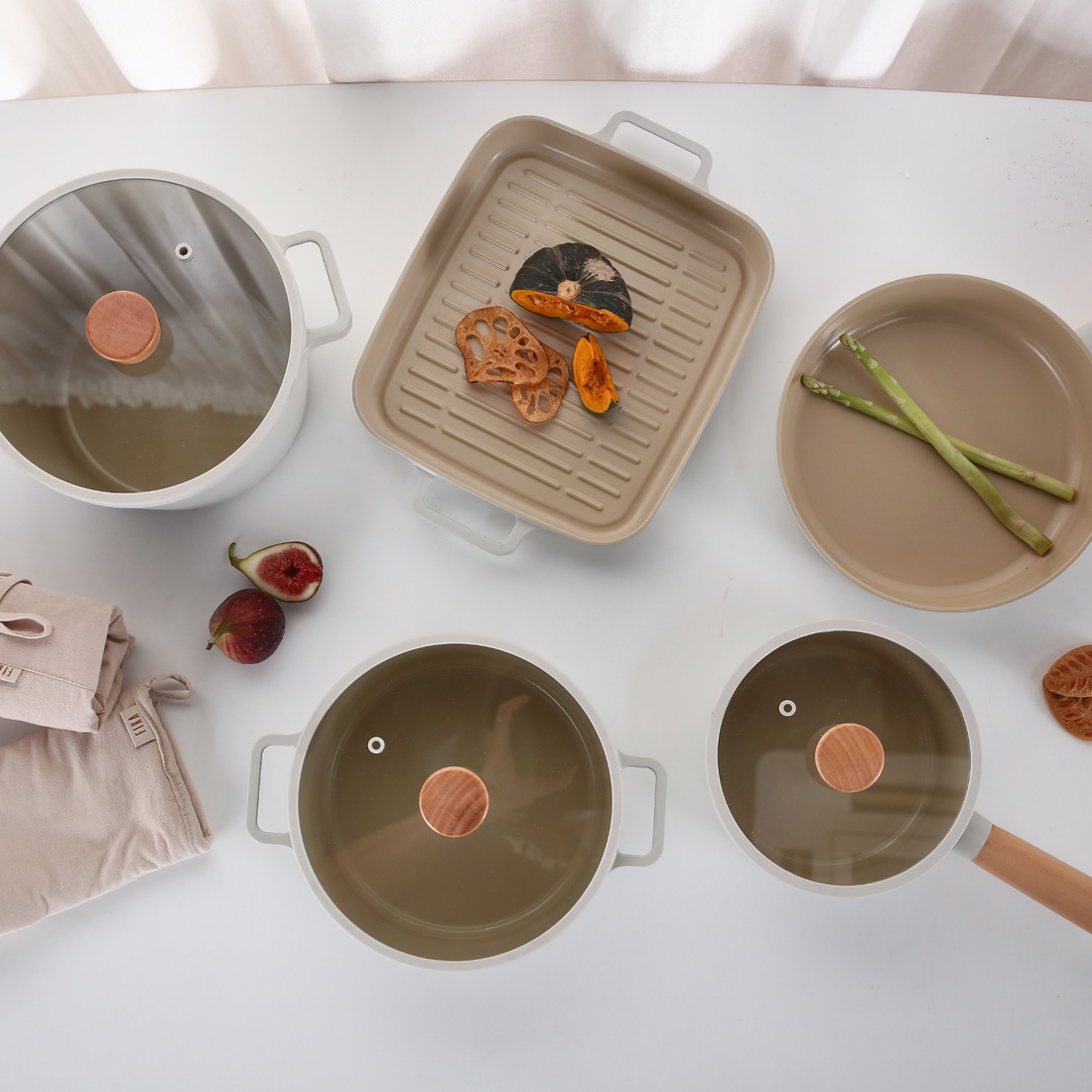
How to Care for the Wooden Handles on Your Ceramic Cookware
Share
Ceramic cookware is the culinary world's future favorite cookware, as it provides a dependable and savoury cooking experience without the many dangerous chemicals present in nonstick coatings. Although you can have your pick of a variety of features, nothing beats classic wood for that aesthetic touch.
The wooden handles and lid knobs featured on FIKA’s cookware are a great choice, as they have natural antibacterial characteristics that protect your food from bacteria, germs, and mould. However, because the handles and knobs are constructed of real wood, they require a particular amount of care than most other cookware appliances.
Wooden accessories are intended to endure a very long time, but it will not if it is not properly cared for. Learning how to clean and care for your ceramic cookware’s wooden parts allows you to produce your finest culinary work, and have your cookware looking brand new even after years.
Avoid the Dishwasher & Soaking
When it comes to caring for the wooden features of your ceramic cookware, the dishwasher is not your best friend. Not only will the dishwasher strip the ceramic coating of your cookware over time, but will have a detrimental effect on the wooden handles and knobs as well.
The heat, chemicals and strong pressurized water will quickly cause the wood to deform with cracks and splits. As a result, always hand-wash your ceramic cookware and avoid the dishwasher altogether.
Furthermore, also avoid soaking your cookware for extended periods of time. The wooden handles and knobs will lose lustre and take on a white-ish colour if soaked. However, this can be corrected using oil.
Hand Wash with Hot Water and Soap
When looking to clean the wooden accessories on your cookware appliance after a long day in the kitchen, you can count on hot water and a little soap to do the job well.
A soft brush should be used to ensure that both the ceramic coating of the cookware and the coating on the wooden handles and knobs remain effective. If you want to be absolutely certain that all of the residual food particles have been cleaned, use a sponge or nylon cleaning pad.
When it comes to when you should clean the cookware, it is best to not let it sit for long. You will want to clean it almost immediately after use, or let the inside soak if you plan on getting the job done later; do your best not to soak the wood.
Thoroughly Air-Dry
After hand-washing your cookware, it is important to let it thoroughly air dry to avoid possible cracking of the wood. If you want to be proactive, you can take a clean hand towel and blot the excess water to ensure the wood doesn’t absorb too much moisture whilst air drying.
Otherwise, extra water droplets trapped in cracks of the wood will not dry fully, and the accumulation might deform or split the wood over time. As a result, always ensure that your wooden handles and knobs have dried up completely before reintroducing them into their rightful settings.
Treat with Food safe/edible Mineral Oils
To maintain the wooden features on your ceramic cookware in good shape, rub them with mineral oil once a month. Food-safe oils are immediately absorbed by the wood, assisting the wooden material in repelling water and retaining their inherent brilliance even after extended usage. Beeswax compounds are also effective for this purpose.
Set aside some time every now and again to give your ceramic cookware’s wooden handles and knobs a nice mineral oil massage. Use only certified mineral oils; avoid using olive or canola oils, which are food-based and can leave the wood with an unpleasant, rancid odour.
Examples of great mineral oils to use are:
Manage Stains
Have you ever had a wooden cutting board that after a while started to develop stains from years of supporting your food? There are effective methods for removing such stains, but it is important to note that the wooden features on your ceramic cookware are no exception.
One approach is to wash the wood immediately with hot water and soap in an attempt to scrape the discoloration out. For particularly stubborn stains, try scraping half a lemon and baking soda directly on the stain and then washing.
If you notice the stain is not coming out, do not worry. As long as you clean and dry the wood correctly, the stains should not pose a health danger from microorganisms. Many stains will fade spontaneously over time and with repeated careful washing.
Choose FIKA
Now that you understand the importance of caring for the wooden features on your ceramic cookware, you are able to choose which piece of cookware best suits you and your kitchen.
Here at FIKA, we believe that healthy cooking starts with healthy cookware, which is why ceramic cookware will always have our hearts. We pride ourselves in bringing you multi-award-winning, eco-friendly, safe cookware that will make you excited to cook (and be the best option for your kitchen).
Interested in learning more about our products? Check out FIKA cookware for a variety of ceramic pots and pans with wooden handles and knobs.
